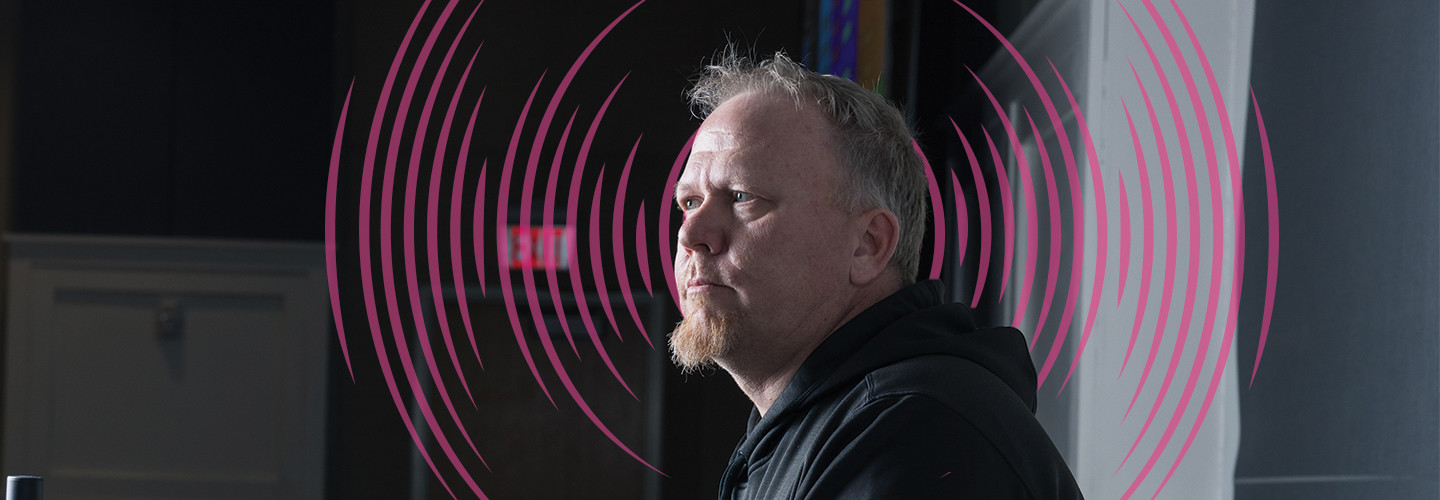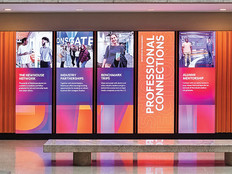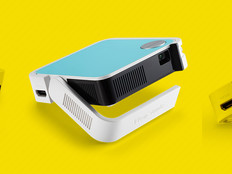The Versa Lite system uses ClearOne’s BMA CT beamforming microphones, technology that integrates easily into typical drop-ceiling tiles. The microphones optimize audio pickup by switching automatically between directional sound beams as the person who is talking moves around the room. It works in conjunction with auto-tracking cameras, and the entire system connects through a USB hub to in-room laptops and PCs.
The ceiling mics-and-mixer strategy used for lecture halls and other large rooms also incorporates tracking cameras to make video part of the hybrid learning experience. It connects seamlessly with up to a dozen lapel or lavalier microphones to enable panel discussions and multispeaker presentations.
“What this has done is allow faculty to be more flexible in their teaching modes,” Bannan says. “Now, they can bring a participant in remotely very easily, whereas pre-pandemic, if you didn’t use a specific room, that would have been impossible.”
Today, he notes, approximately 70 classrooms have all the tech required for hybrid learning. His team’s plan is to complete ClearOne deployments in 15 more rooms over the coming months and, from there, to continue upgrading campus spaces as the technology budget allows.
TCNJ will need those additional installations, he says, because it’s increasing its blended learning offerings, which mix online and face-to-face instruction. Students enrolled in such courses use Zoom to join class remotely, and the ClearOne technology allows them to interact with the instructor and their onsite classmates.
“It’s almost like they’re there in the room,” Bannan says. “They can see and hear everything like anyone else.”
Integrated Audio Solutions Can Be Customized for Any Space
With hybrid learning here to stay in higher ed, many colleges are seeking to bridge the gap between students’ remote and on-campus experiences.
One recent survey from Tyton Partners found that 69 percent of students prefer online or hybrid learning over full-time, face-to-face instruction.
“Hybrid is definitely growing and evolving,” says Richard Garrett, chief research officer with Eduventures, a division of the research and advisory firm Encoura. “The challenge at the moment is, there’s no real agreement around how to do it.”
For some institutions, at least, the answer is similar to the approach Bannan and his colleagues are taking at TCNJ. Schools are turning to integrated audio solutions they can customize to fit each room’s unique needs.
“For us, the pandemic really pushed things forward and set us up for where we are today,” says Brian Hermann, tech support specialist supervisor at Mesa Community College in Arizona. Like MCC’s counterpart in New Jersey, its technology services team used ClearOne systems to boost campus audio capabilities.









